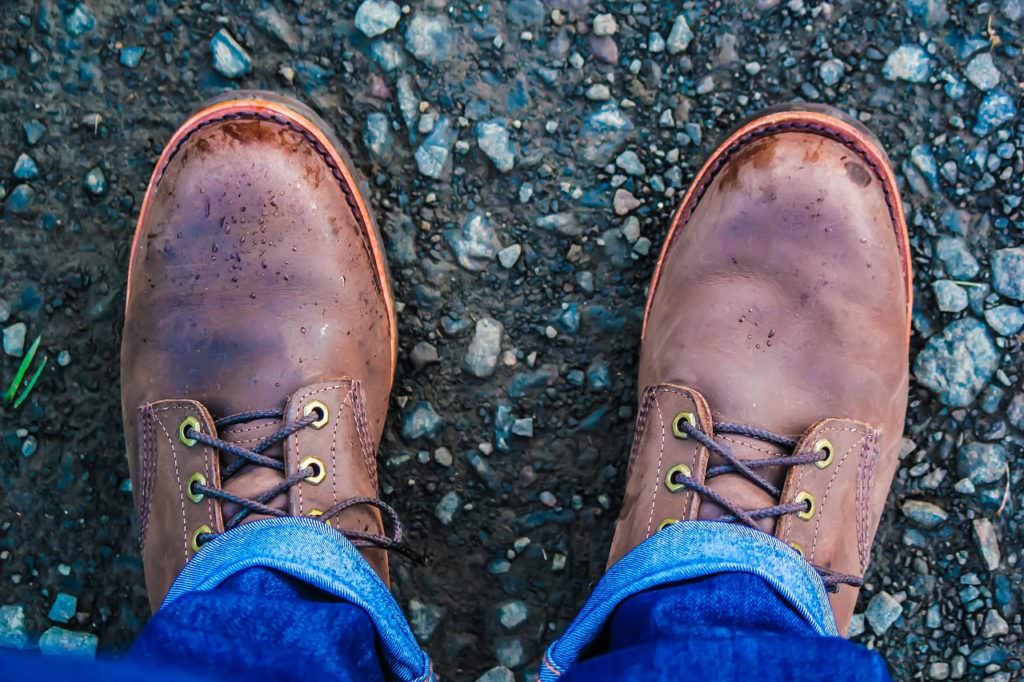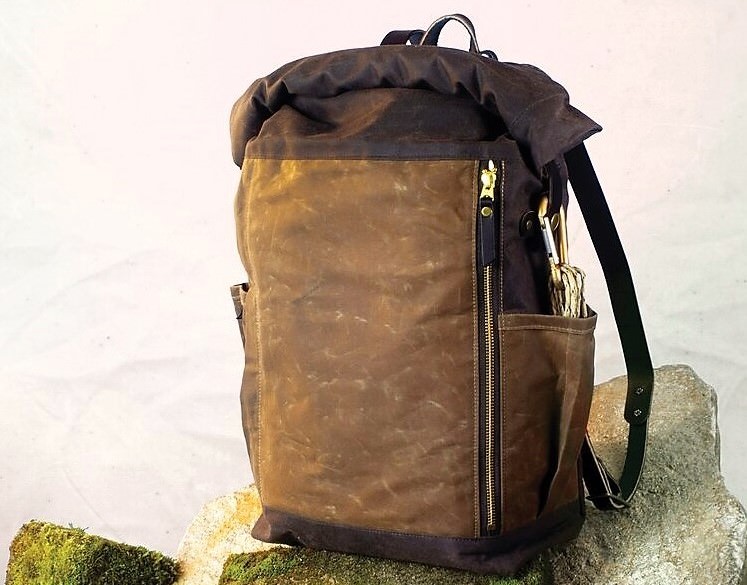Leather has a tremendous environmental impact, not to mention the ethical concerns surrounding animal agriculture. But it’s hard to replace this durable and versatile material – just try shopping for a pair of vegan work boots.
Unfortunately, “vegan leather” is not just a poor substitute for the functionality of animal hides. It is also a nearly useless marketing term to replace the word “plastic.” This means that despite the eco-friendly-sounding name, these leather alternatives have many of the same environmental problems as other synthetic fabrics, and in some cases can be even worse.
So, what material should you look for the next time you want a pair of sturdy shoes or a long-lasting handbag? The answer, as always in our slowly changing economy, is complicated.

Good
PVC (good to avoid)
Polyvinyl chloride (PVC) has been used as a leather substitute for a long time. Vinyl is a petroleum-based material and a known human carcinogen. It produces toxic byproducts like dioxins throughout its entire life cycle. In addition to the climate impacts of petroleum extraction and processing, vinyl fabric is usually made by adhering PVC to a polyester backing. Polyester is also a synthetic, petroleum-based material with significant climate and environmental impacts. It’s good to avoid vegan leather (and all other products) made from PVC.
Real Leather
Leather can be made from a wide variety of animals, but cowhide is most common. Although the climate and other environmental impacts of animal agriculture – especially cattle – are huge, most hides used for leather are a waste product of that industry. Purchasing leather goods does somewhat amortize meat’s environmental impact, but it also props up the finances of an unsustainable industry.
Leather’s environmental impacts go far beyond growing the animals. One of the few comprehensive life cycle analyses of fabrics, the Higg Materials Sustainability Index, found that the overall environmental impacts of leather far outweighed anything else in the study. This is consistent with an analysis that ranked beef and dairy as the most harmful food sources.
Source: Ethical Gallery
But looking specifically at climate impacts, leather had less impact than synthetics according to the Higg Index. Since the above study examined “cradle to gate” rather than “cradle to grave” or “cradle to cradle” (true reuse of the material), it’s also important to remember that leather lasts sometimes decades longer than its less durable alternatives. When you add replacement rates into the equation, leather comes out ahead of plastic overall.
When only real leather will serve your purpose, it is good to look for the lowest-impact leather available.
Vegetable tanning, which produces “metal-free leather” is a less toxic process than the more common chrome tanning. The third-party auditor Leather Working Group inspects and rates tanneries’ environmental performance. Bluesign and Oeko-Tex Leather Standard offer guidelines for nontoxic leather chemistry and approve leather products for safety. Composition leather is made from recycled leather off-cuts, trimmings, and shavings of leather products that would normally be sent by the leather industry to the landfill.

Leather has fewer climate impacts and often lasts decades longer than synthetics. Image by outdoorlessons from Pixabay
Better
Pleather
Pleather has a reputation for low quality, so nowadays, you’ll usually find it marketed as “vegan leather.” Like vinyl, pleather is basically plastic (polyurethane or polypropylene) on a polyester backing. Both layers of the fabric are petroleum products with significant climate impacts. Both the manufacturing process (while still involving harmful chemicals) and the final product are less toxic than PVC. Polyurethane pleather is therefore a better choice than vinyl-based vegan leather.
Waxed Canvas
Waxed canvas is durable and waterproof compared to most fabrics, which makes it a useful alternative to leather in all but the most rigorous applications. Canvas is usually made from cotton, which has significant environmental impacts as well but is a better choice than leather. If the cotton is organic, it might also be a better choice than the polyester base of most leather alternatives. However, the wax is usually paraffin, which is yet another petroleum product. If you can find canvas made from flax that is waxed with beeswax or soy wax, waxed canvas might be your best choice.

Waxed canvas is a durable, waterproof alternative to leather. Image source: Klumhouse.com
Best
Plant-based Leathers
A leather alternative that is animal or petroleum-free would be the best choice. Numerous fabrics are in development, using a variety of materials. So far, few plant-based leathers are commercially available, and none have been studied through life cycle analysis. Most of the ones you can buy, like pineapple leaf-based Piñatex, still require a synthetic coating. Mushroom-based materials like Muskin, Mylo, and Mycoworks are completely animal and synthetic-free.
Using Less
Whether you’re buying real leather or vegan leather, only buy what you really need from responsible brands, or buy second-hand. Read labels carefully and don’t be afraid to ask for more information and better practices. Buy the best quality you can afford. Take good care of your leather and leather-like products to ensure they last as long as possible.
Until truly sustainable leather alternatives are readily available, buying less is the best choice.
The post Good, Better, Best: Leather and Leather Alternatives appeared first on Earth 911.








